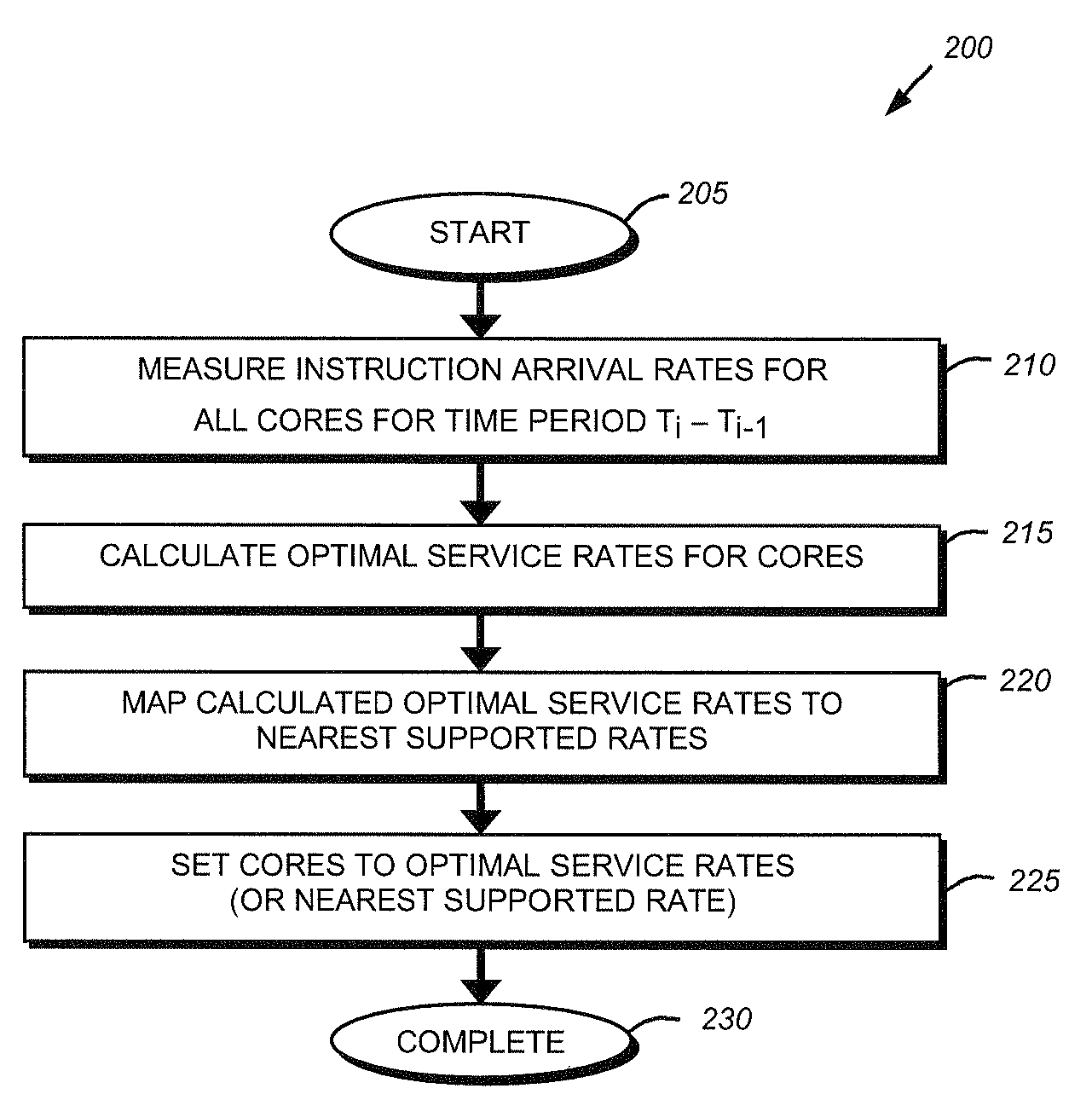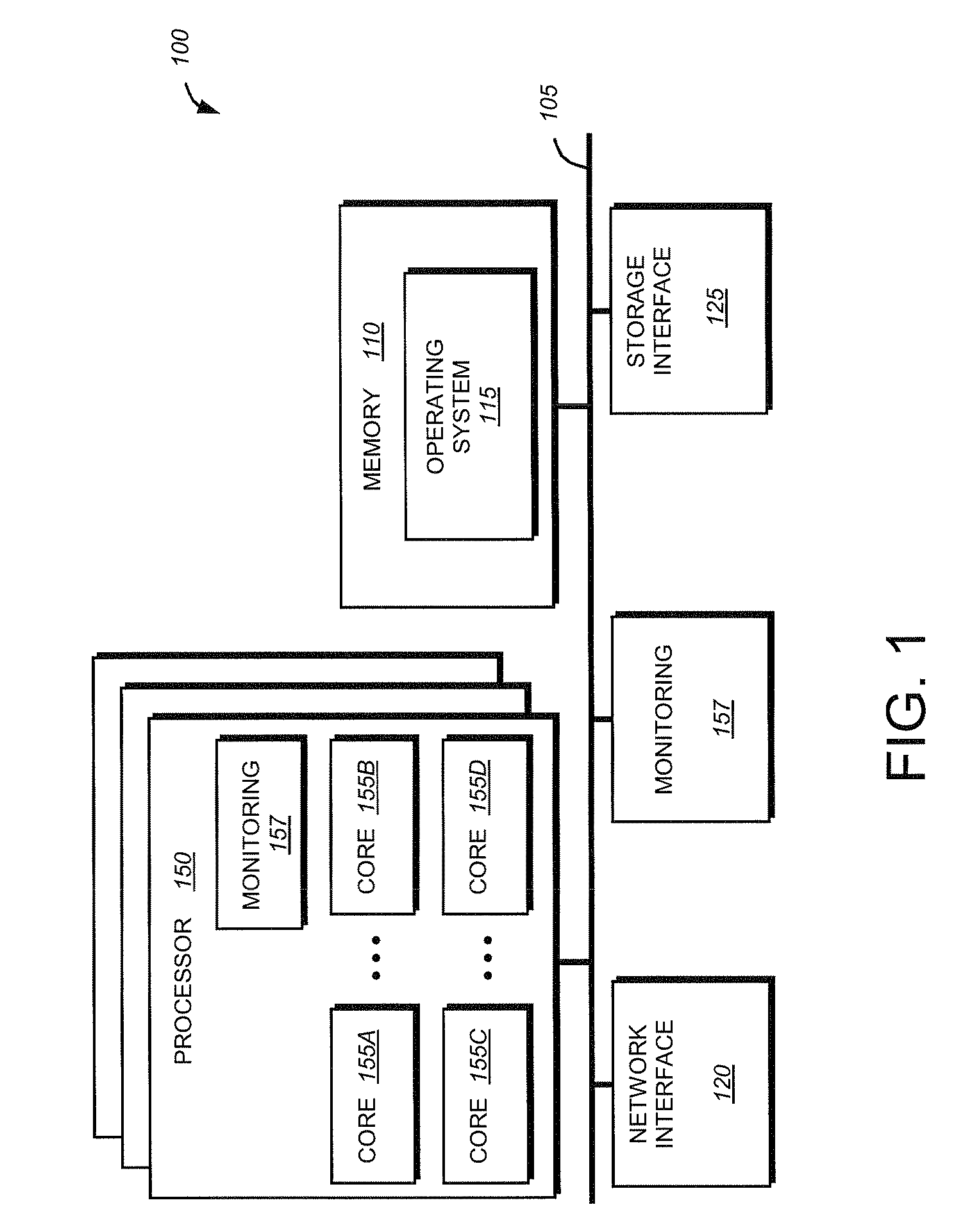System and method for prioritization of clock rates in a multi-core processor
a multi-core processor and clock rate technology, applied in the field of multi-core processors, can solve the problems of increasing the total power consumed by the processor, increasing the amount of heat that must be dissipated, and slowing down to a fraction of what has occurred, so as to improve the system throughput
- Summary
- Abstract
- Description
- Claims
- Application Information
AI Technical Summary
Benefits of technology
Problems solved by technology
Method used
Image
Examples
Embodiment Construction
rocedure for prioritization of clock rates in a multi-core processor in accordance with an illustrative embodiment of the present invention; and
[0016]FIG. 3 is a chart detailing observed instructions per second versus fraction of maximum power in accordance with an illustrative embodiment of the present invention.
DETAILED DESCRIPTION OF AN ILLUSTRATIVE EMBODIMENT
[0017]The present invention provides a system and method for prioritization of clock rates in a multi-core processor. Illustratively, instruction arrival rates are measured during a time interval Ti−1 to Ti by a monitoring module associated with the processor. Using the measured instruction arrival rates, the monitoring module calculates an optimal instruction arrival rate for each core of the processor. This optimal instruction arrival rate is then used to dynamically modify the allocation of arrival rates among the cores, thereby increasing overall instruction throughput.
A. Multi-Core System Architecture
[0018]FIG. 1 is a s...
PUM
 Login to View More
Login to View More Abstract
Description
Claims
Application Information
 Login to View More
Login to View More - R&D
- Intellectual Property
- Life Sciences
- Materials
- Tech Scout
- Unparalleled Data Quality
- Higher Quality Content
- 60% Fewer Hallucinations
Browse by: Latest US Patents, China's latest patents, Technical Efficacy Thesaurus, Application Domain, Technology Topic, Popular Technical Reports.
© 2025 PatSnap. All rights reserved.Legal|Privacy policy|Modern Slavery Act Transparency Statement|Sitemap|About US| Contact US: help@patsnap.com



